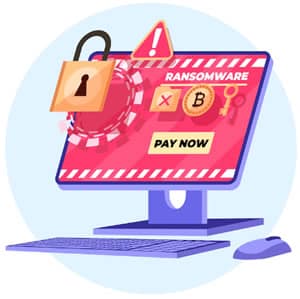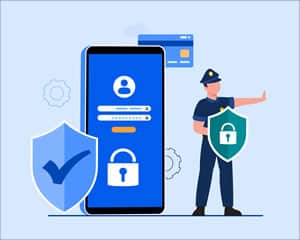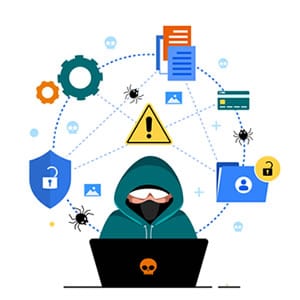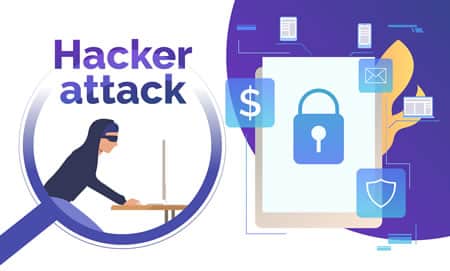Ransomware Recovery Services in Uganda

Ransomware is a type of malware that encrypts a victim’s files and demands a ransom payment in exchange for the decryption key. This type of attack can be devastating for individuals and businesses alike, as it can lead to the loss of important data and financial losses. In Uganda, ransomware recovery services have become increasingly important as the country has seen a rise in ransomware attacks in recent years.
One of the main challenges of dealing with a ransomware attack is that the victim may not have a current backup of their files. This means that the only way to regain access to the encrypted files is to pay the ransom or seek the help of a professional ransomware recovery service. These services specialize in identifying and removing the malware, as well as attempting to decrypt the files without paying the ransom.
Ransomware Data Recovery Uganda
One of the key benefits of using East Africa Hi Tech Solutions‘ ransomware recovery service is that they have the experience and tools necessary to deal with the complex encryption algorithms used by ransomware. This can greatly increase the chances of successfully recovering the encrypted files without paying the ransom. Additionally, a professional service will also be able to provide guidance on how to prevent future attacks and improve overall cybersecurity.
In Uganda, there are a number of ransomware recovery services available to individuals and businesses. These services range from small, local firms to larger international companies. It’s important to choose a reputable service with a track record of successfully recovering files from ransomware attacks.
If you or your business have been the victim of a ransomware attack, it’s important to act quickly. The longer you wait, the less likely it is that your files will be able to be recovered. Contact a reputable ransomware recovery service as soon as possible and take steps to prevent future attacks. Don’t let ransomware ruin your day, contact us today and let us help you get back to business as usual.
List of the most common ransomware variants
- WannaCry: This ransomware attack was first identified in 2017 and quickly spread globally, affecting hundreds of thousands of computers. It exploits a vulnerability in the Windows operating system to encrypt files and demand a ransom payment.
- CryptoLocker: This ransomware variant was first identified in 2013 and is known for its use of advanced encryption algorithms. It targets individuals and businesses, encrypting files and demanding a ransom payment in exchange for the decryption key.
- Petya: This ransomware variant was first identified in 2016 and is known for its ability to encrypt the entire hard drive, making it difficult to recover files without paying the ransom. It also includes a worm-like feature that allows it to spread to other computers on a network.
- Locky: This ransomware variant was first identified in 2016 and is known for its use of social engineering tactics to trick victims into downloading and installing the malware. It encrypts files and demands a ransom payment in exchange for the decryption key.
- Cerber: This ransomware variant was first identified in 2016 and is known for its use of a distributed attack model, which allows it to spread quickly to multiple computers. It encrypts files and demands a ransom payment in exchange for the decryption key.
- Ryuk: This ransomware variant was first identified in 2018, and it’s known for targeting big organizations and demanding large amounts of money. It encrypts files and demands a ransom payment in exchange for the decryption key.
- SamSam: This ransomware variant was first identified in 2015 and is known for its use of targeted attacks, usually targeting government organizations, healthcare providers, and other large institutions. It encrypts files and demands a ransom payment in exchange for the decryption key.
- GandCrab: This ransomware variant was first identified in 2018 and is known for its use of a malware-as-a-service model, allowing anyone to rent the malware and use it to launch attacks. It encrypts files and demands a ransom payment in exchange for the decryption key
How to prevent ransomware attacks
- Keep software and operating systems up to date: One of the most effective ways to prevent ransomware is to ensure that all software and operating systems are up to date with the latest security patches. This will help to close any known vulnerabilities that could be exploited by attackers.
- Use anti-virus and anti-malware software: Installing and regularly updating anti-virus and anti-malware software can help to protect against ransomware and other types of malware.
- Be cautious of suspicious emails and links: Ransomware is often spread through phishing emails and links, so it’s important to be cautious when opening emails or clicking on links from unknown sources.
- Use a firewall: A firewall can help to block unauthorized access to your computer or network and prevent ransomware from communicating with command and control servers.
- Back up important files regularly: Backing up important files on a regular basis is crucial in case of a ransomware attack. This way you can restore your files and not need to pay the ransom.
- Limit user privileges: Limiting the privileges of users on your network can help to prevent malware from spreading.
- Use a pop-up blocker: Pop-up blockers can help to prevent malicious pop-up windows from appearing on your computer, which can be used to spread malware.
- Be aware of RDP vulnerabilities: If you are using Remote Desktop Protocol (RDP) ensure that it is configured securely and use a VPN.
- Educate your employees: Educate your employees on the risks of ransomware and the importance of following safe online practices, such as not clicking on suspicious links or opening attachments from unknown sources.
- Use a multi-layered security approach: Implementing a multi-layered security approach that includes firewalls, intrusion detection and prevention, and security information and event management (SIEM) systems, can help to detect and prevent ransomware attacks.
Conclusion
Ransomware recovery services are a vital tool for dealing with the growing threat of ransomware attacks in Uganda. These services can help individuals and businesses regain access to their encrypted files without paying the ransom, and also provide guidance on how to prevent future attacks. If you or your business have been the victim of a ransomware attack, don’t hesitate to contact a reputable Ransomware Recovery Company in Uganda for help









